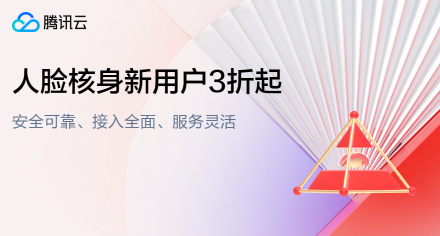如何将服务器映像url转换为可绘制的Int
提问于 2021-01-31 21:17:18
我在服务器上有图像,并使用毕加索库将其加载到安卓应用程序中,我希望ZoomIn和缩放应用程序中所有加载的图像。我推荐https://developer.android.com/training/animation/zoom#java这个链接来放大imageView。
在下面的代码中,调用zoomImageFromThumb时,它们传递的是ImageView持有人和可绘制int。
请帮助我转换图像URl到绘图Int作为参数传递,也请让我知道是否有任何其他解决方案。
提前感谢
加载图像代码
Picasso.get()
.load(model.getImage_path())
.error(R.drawable.not_found)
.into(image_IV)调用zoomImageFromThumb
thumb1View.setOnClickListener(new View.OnClickListener() {
@Override
public void onClick(View view) {
zoomImageFromThumb(thumb1View, R.drawable.image1);
}
});````回答 1
Stack Overflow用户
回答已采纳
发布于 2021-01-31 21:32:50
他们将drawableId作为Int,并将其设置为ImageView中的image,但在您的示例中,您可以使用picasso将image加载到Imageview中,这样您就可以将url而不是drawableId传递到zoomImageFromThumb方法,如下所示
private fun zoomImageFromThumb(thumbView: View, imageUrl: String) {
// If there's an animation in progress, cancel it
// immediately and proceed with this one.
currentAnimator?.cancel()
//load image using picasso
Picasso.get()
.load(imageUrl)
.error(R.drawable.not_found)
.into(findViewById<ImageView>(R.id.expanded_image))
// Calculate the starting and ending bounds for the zoomed-in image.
// This step involves lots of math. Yay, math.
val startBoundsInt = Rect()
val finalBoundsInt = Rect()
val globalOffset = Point()
// The start bounds are the global visible rectangle of the thumbnail,
// and the final bounds are the global visible rectangle of the container
// view. Also set the container view's offset as the origin for the
// bounds, since that's the origin for the positioning animation
// properties (X, Y).
thumbView.getGlobalVisibleRect(startBoundsInt)
findViewById<View>(R.id.container)
.getGlobalVisibleRect(finalBoundsInt, globalOffset)
startBoundsInt.offset(-globalOffset.x, -globalOffset.y)
finalBoundsInt.offset(-globalOffset.x, -globalOffset.y)
val startBounds = RectF(startBoundsInt)
val finalBounds = RectF(finalBoundsInt)
// Adjust the start bounds to be the same aspect ratio as the final
// bounds using the "center crop" technique. This prevents undesirable
// stretching during the animation. Also calculate the start scaling
// factor (the end scaling factor is always 1.0).
val startScale: Float
if ((finalBounds.width() / finalBounds.height() > startBounds.width() / startBounds.height())) {
// Extend start bounds horizontally
startScale = startBounds.height() / finalBounds.height()
val startWidth: Float = startScale * finalBounds.width()
val deltaWidth: Float = (startWidth - startBounds.width()) / 2
startBounds.left -= deltaWidth.toInt()
startBounds.right += deltaWidth.toInt()
} else {
// Extend start bounds vertically
startScale = startBounds.width() / finalBounds.width()
val startHeight: Float = startScale * finalBounds.height()
val deltaHeight: Float = (startHeight - startBounds.height()) / 2f
startBounds.top -= deltaHeight.toInt()
startBounds.bottom += deltaHeight.toInt()
}
// Hide the thumbnail and show the zoomed-in view. When the animation
// begins, it will position the zoomed-in view in the place of the
// thumbnail.
thumbView.alpha = 0f
expandedImageView.visibility = View.VISIBLE
// Set the pivot point for SCALE_X and SCALE_Y transformations
// to the top-left corner of the zoomed-in view (the default
// is the center of the view).
expandedImageView.pivotX = 0f
expandedImageView.pivotY = 0f
// Construct and run the parallel animation of the four translation and
// scale properties (X, Y, SCALE_X, and SCALE_Y).
currentAnimator = AnimatorSet().apply {
play(ObjectAnimator.ofFloat(
expandedImageView,
View.X,
startBounds.left,
finalBounds.left)
).apply {
with(ObjectAnimator.ofFloat(expandedImageView, View.Y, startBounds.top, finalBounds.top))
with(ObjectAnimator.ofFloat(expandedImageView, View.SCALE_X, startScale, 1f))
with(ObjectAnimator.ofFloat(expandedImageView, View.SCALE_Y, startScale, 1f))
}
duration = shortAnimationDuration.toLong()
interpolator = DecelerateInterpolator()
addListener(object : AnimatorListenerAdapter() {
override fun onAnimationEnd(animation: Animator) {
currentAnimator = null
}
override fun onAnimationCancel(animation: Animator) {
currentAnimator = null
}
})
start()
}
// Upon clicking the zoomed-in image, it should zoom back down
// to the original bounds and show the thumbnail instead of
// the expanded image.
expandedImageView.setOnClickListener {
currentAnimator?.cancel()
// Animate the four positioning/sizing properties in parallel,
// back to their original values.
currentAnimator = AnimatorSet().apply {
play(ObjectAnimator.ofFloat(expandedImageView, View.X, startBounds.left)).apply {
with(ObjectAnimator.ofFloat(expandedImageView, View.Y, startBounds.top))
with(ObjectAnimator.ofFloat(expandedImageView, View.SCALE_X, startScale))
with(ObjectAnimator.ofFloat(expandedImageView, View.SCALE_Y, startScale))
}
duration = shortAnimationDuration.toLong()
interpolator = DecelerateInterpolator()
addListener(object : AnimatorListenerAdapter() {
override fun onAnimationEnd(animation: Animator) {
thumbView.alpha = 1f
expandedImageView.visibility = View.GONE
currentAnimator = null
}
override fun onAnimationCancel(animation: Animator) {
thumbView.alpha = 1f
expandedImageView.visibility = View.GONE
currentAnimator = null
}
})
start()
}
}
}页面原文内容由Stack Overflow提供。腾讯云小微IT领域专用引擎提供翻译支持
原文链接:
https://stackoverflow.com/questions/65987512
复制相关文章












